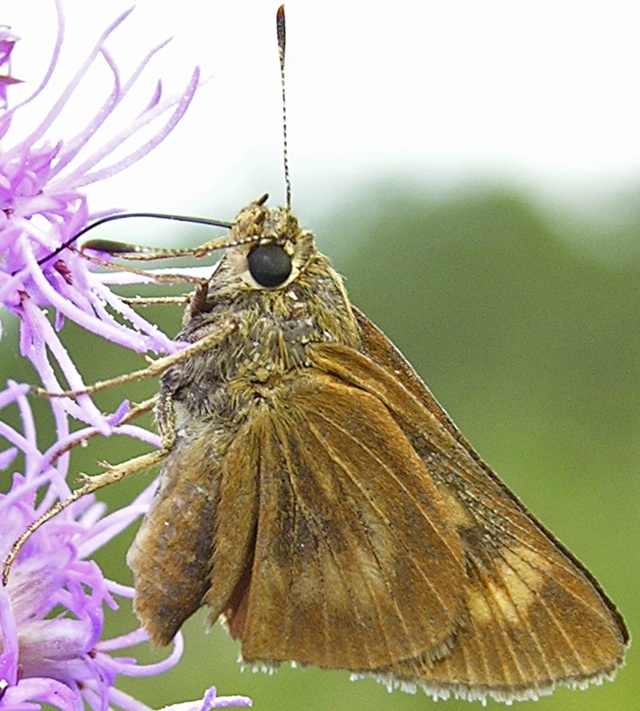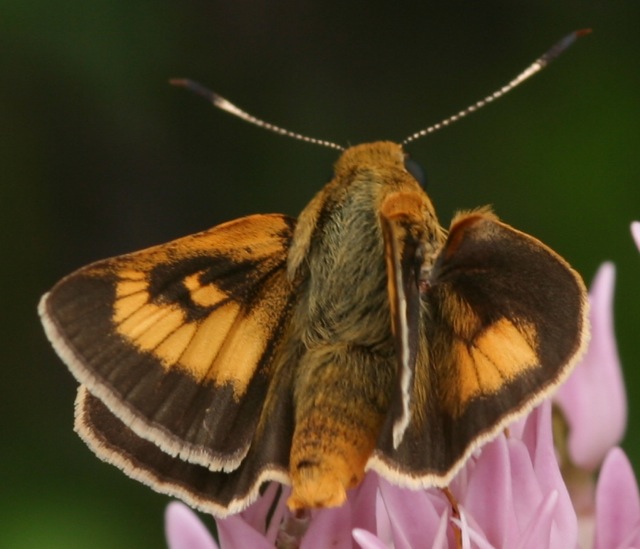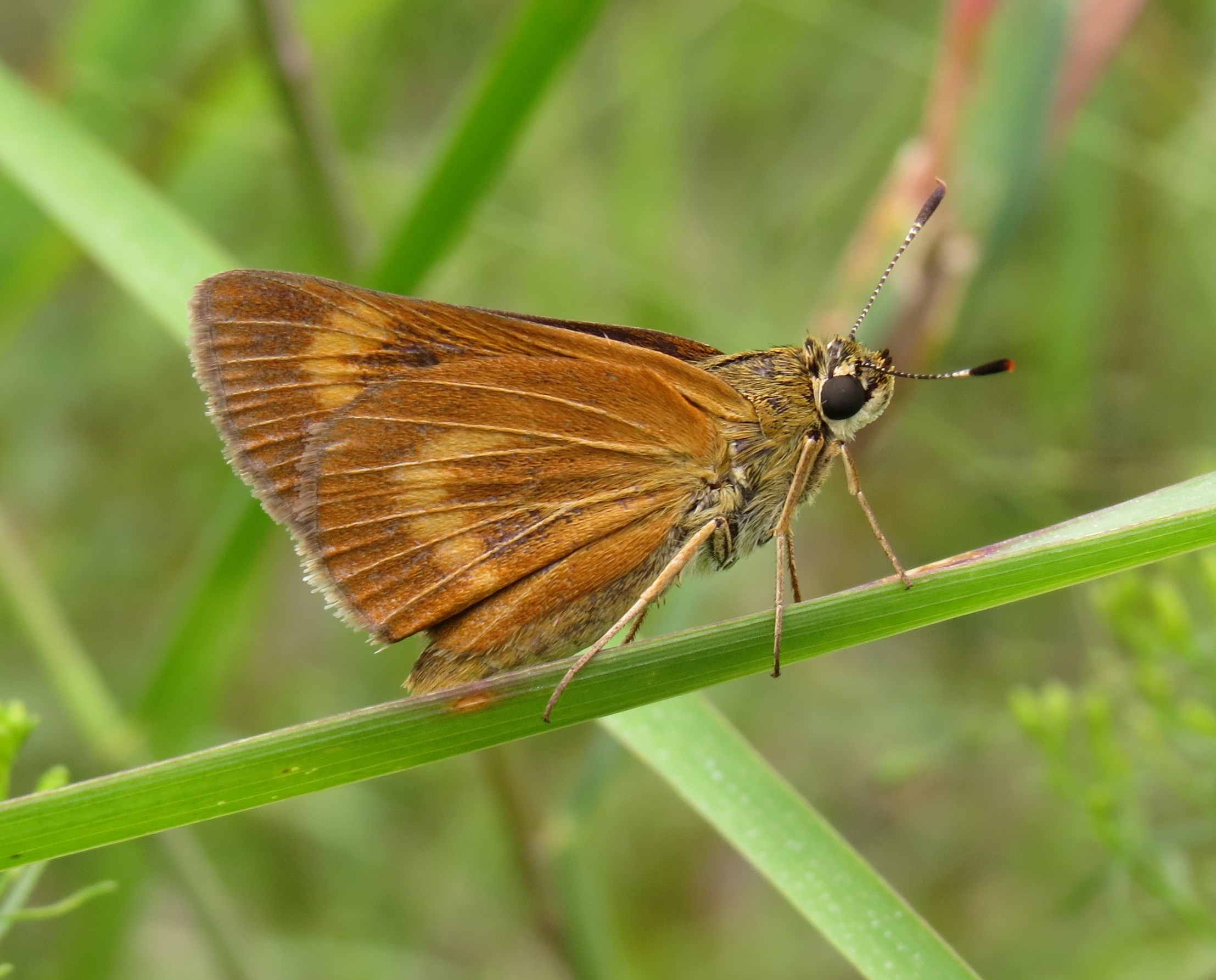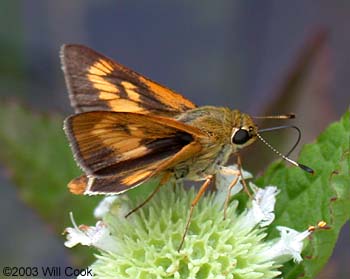|
| Common Name | Byssus Skipper by Shay Garriock => 8/23/07 Columbus Co. NC
[View PDF]
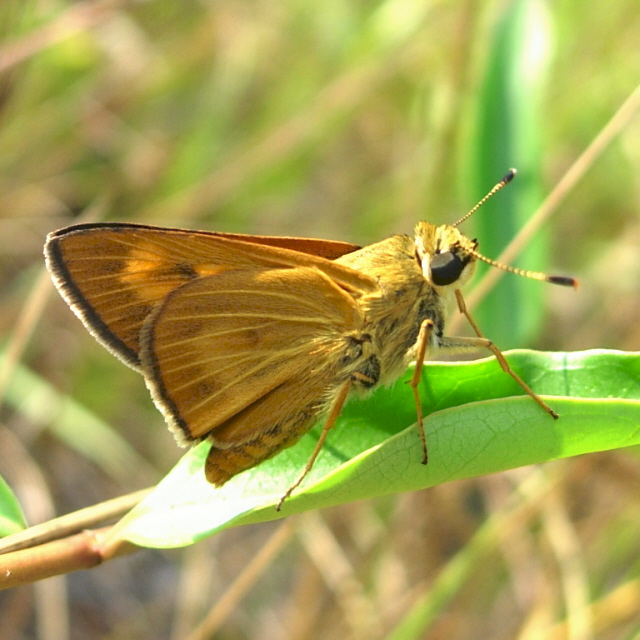 Click to enlarge Click to enlarge
[Google Images] GBIF [Global Distribution ] BoA [Images ] iNaturalist |
| Scientific Name | Problema byssus
|
| Link to BAMONA species account. |
| Map | Click on a county for list of all database records for the species in that county.
 |
| Distribution | DISTRIBUTION: The species is expanding its range northward fairly rapidly, and is now found across the southern half of the Coastal Plain and the southeastern Piedmont. In the 20th Century, it was not recorded from the Piedmont, but by 2011 it had been recorded in the Piedmont in Cleveland, Chatham, and Wake counties. The Coastal Plain range also expanded northward during this time frame, and by 2012 had been recorded from Johnston and Jones counties. By 2018, records had come from Durham, Mecklenburg, and Gaston counties, and by 2020 the range has expanded north to southern Granville County and northwest to Orange County, which now represent the northern edge of the range. It is not known from VA or northward -- yet.
|
| Abundance | ABUNDANCE: Slowly increasing and spreading northward. Uncommon to locally fairly common in the southern coastal counties, but can be common in Croatan National Forest. Rare to uncommon in the inner Coastal Plain west to Cumberland and Robeson counties, but very rare to rare in the Sandhills region; rare but increasing in the eastern and southeastern Piedmont (several daily counts of six individuals). The species is a bit colonial, and eight to ten or more can be found in a small area of habitat.
|
| Flight | FLIGHT PERIOD: Two broods, with a small first brood from early June to early July. The main brood is mid-August to late September.
|
| Habitat | HABITAT: This species is found in tall, moist grassy areas, generally near ecotones of moist woods and open areas. Habitats include savanna edges, margins of swamps and bottomlands, damp powerline clearings, and fresh marshes. Stands of Eastern Gamagrass (Tripsacum dactyloides) are a habitat indicator, as this tall grass seems to be the primary foodplant in NC.
|
| Plants | FOOD AND NECTAR PLANTS: Eastern Gamagrass is the primary foodplant in the Southeast, but it certainly must use other grasses, as this tall grass is absent in some areas where the butterfly occurs. The species nectars on many species.
|
| Comments | COMMENTS: This species can be confused with both the Rare Skipper and the Delaware Skipper, which may occur with Byssus. However, the Byssus almost always has a vertical pale patch on the hind wing below, whereas Rare and Delaware are unmarked below. The species was considered to be quite rare in NC about 25 years ago, but many colonies or isolated records have been found in the past 20 years, in part owing to more thorough field work but also to an expanding range in the Piedmont. To find this species, it helps to be familiar with Gamagrass, as I found the species twice in the Carolinas in 1997 by first noting patches of this tall grass. Interestingly, Gamagrass is found throughout NC, so some other factors limit the butterfly to the southeastern part of the state.
Researchers in SC have found that some female Byssus Skippers there, at least at one to several locales near the coast, lack any pale patch/chevron on the under hind wing; they can thus be confused with Berry's Skipper. Photos of all "Berry's" in NC have been reviewed by experts, and there is no indication that any of these are simply unmarked Byssus Skippers. And, no one has reported such unmarked Byssus Skippers in NC; they seem to occur only in coastal SC into GA, and maybe into FL.
|
State Rank | S3S4 | | State Status | |
Global Rank | G4 | | Federal Status | |
| Synonym | Atrytone byssus
|
| Other Name |
|
|
|

 >>
>>